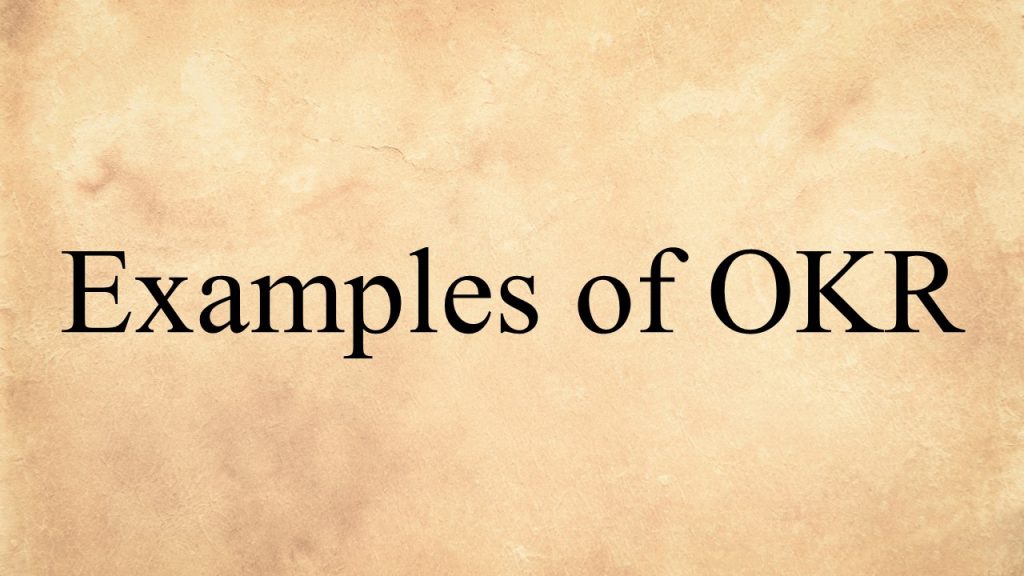
North Star Objectives are a company’s core, overarching goals that guide decision-making and help ensure everyone is aligned towards a common vision. They serve as a beacon that keeps teams focused on what truly matters and helps them prioritize their efforts and resources.
An example of a global company with a North Star Objective is Amazon. Amazon’s North Star Objective is to be the world’s most customer-centric company. This objective guides all of their decision-making and drives their focus on providing the best possible experience for their customers. As a result, Amazon has built a loyal customer base and become a leader in e-commerce and cloud computing.
Steps involved in developing North Star Objectives are :
- Identify the key problem or opportunity: Start by understanding the problem or opportunity that you want to solve for your customers.
- Define your customer segments: Get a clear understanding of who your customers are, their needs, and what they value.
- Determine your product’s Unique Value Proposition (UVP): Identify what makes your product unique and valuable to your customers.
- Establish measurable goals: Set specific, measurable, and achievable goals that align with your UVP and customer segments.
- Align your team: Ensure that everyone on your team understands the North Star Objective and is aligned with it.
- Monitor progress and adjust as needed: Continuously monitor progress towards your North Star Objective and make adjustments as needed.
- Make it actionable: Create a plan to turn your North Star Objective into action, including metrics and key results to measure success.
#nilakantasrinivasan-j #canopus-business-management-group #B2B-client-centric-growth

Here are some pro tips for writing effective Key Results (part of OKRs – Objectives and Key Results):
- Make sure Key Results are quantifiable: Key Results should be expressed in a way that is easily measurable, such as a number, percentage, or deadline.
- Align Key Results with Objectives: Key Results should support the Objectives and help measure progress towards achieving them.
- Make Key Results challenging, but realistic: Key Results should be challenging and drive progress, but they should also be realistic and achievable.
- Use a variety of metrics: Using a mix of metrics, such as financial metrics, customer satisfaction metrics, and employee engagement metrics, can help provide a comprehensive view of progress towards the Objective.
- Encourage collaboration: Key Results should be written with input from team members and should encourage collaboration and teamwork.
- Consider including interim milestones: Including interim milestones can help track progress towards Key Results and ensure that the team stays on track.
- Review and adjust Key Results regularly: Key Results should be reviewed regularly to ensure they remain relevant and aligned with the Objective and company goals.
By following these tips, you can write effective Key Results that support sustainable business growth and drive progress towards your company’s goals.
#nilakantasrinivasan-j #canopus-business-management-group #B2B-client-centric-growth #OKR

Here are some pro tips for writing effective OKR Objectives (part of OKRs – Objectives and Key Results):
- Make sure Objectives are SMART: Objectives should be Specific, Measurable, Achievable, Relevant, and Time-bound.
- Keep Objectives clear and concise: Avoid using overly complex language or including too much detail.
- Align Objectives with company goals: Objectives should align with and support the company’s overall goals and vision.
- Make Objectives challenging, but realistic: Objectives should push individuals and teams to achieve more, but they should also be attainable with effort and dedication.
- Encourage collaboration: Objectives should be written with input from team members and should encourage collaboration and teamwork.
- Consider adding Key Results: Including Key Results that support the Objective helps to ensure that the Objective is specific and measurable.
- Review and adjust Objectives regularly: Objectives should be reviewed regularly to ensure they remain relevant and aligned with the company’s goals and vision.
By following these tips, you can write effective Objectives that support sustainable business growth and drive progress towards your company’s goals.
#nilakantasrinivasan-j #canopus-business-management-group #B2B-client-centric-growth #OKR

Here are some examples of OKR (Objectives and Key Results) that an organization could set:
Increase sales revenue by 20% in the next quarter
- Objective: Increase sales revenue
- Key Results:
- Achieve a 15% increase in customer acquisition
- Increase average order value by 10%
- Launch 3 new products that contribute to revenue growth
Improve employee engagement and satisfaction:
- Objective: Improve employee engagement and satisfaction
- Key Results:
- Conduct employee satisfaction surveys and analyze results
- Implement a recognition and rewards program for employees
- Increase employee participation in training and development programs by 25%
Enhance customer experience:
- Objective: Enhance customer experience
- Key Results:
- Reduce customer complaint resolution time by 50%
- Increase customer satisfaction score from 80% to 85%
- Implement a customer feedback system and act on customer feedback to improve customer experience
These are just a few examples, and OKRs can be tailored to specific organizational goals and objectives. The key is to ensure that the objectives are specific, measurable, achievable, relevant, and time-bound (SMART).
#nilakantasrinivasan-j #canopus-business-management-group #B2B-client-centric-growth #OKR

The use of a balanced scorecard (BSC) and OKRs are not mutually exclusive, and both frameworks can provide valuable insights and benefits for organizations. The choice between using a BSC or OKRs, or using both frameworks together, will depend on the specific needs and goals of an organization.
The balanced scorecard is a performance management tool that provides a comprehensive view of an organization’s performance by measuring and tracking key performance indicators (KPIs) in four areas: financial, customer, internal processes, and learning and growth. The BSC provides a broad view of an organization’s performance and can help organizations make data-driven decisions and track progress towards their goals. strategy maps in balanced scorecards (BSCs) are indeed designed to drive performance and growth by providing alignment. Strategy maps used in BSC provide a visual representation of an organization’s strategy and help to align the organization’s efforts towards its goals. The strategy map links the organization’s vision and mission to its objectives, measures, and initiatives, providing a clear picture of how the organization will achieve its goals. By providing a visual representation of the organization’s strategy, the strategy map helps to ensure that everyone in the organization understands how their work contributes to the achievement of the organization’s goals and objectives. In this way, strategy maps play an important role in driving performance and growth by aligning the organization’s efforts towards its goals and ensuring that everyone is working towards the same objectives.
OKRs, on the other hand, are a goal-setting framework that provides a clear and specific structure for setting and tracking goals. OKRs help organizations align their efforts towards achieving specific and measurable objectives, and provide a clear understanding of what success looks like and how it will be achieved. OKRs can provide a more focused view of an organization’s performance and help organizations prioritize their efforts and resources.
In some cases, organizations may choose to use both the BSC and OKRs, leveraging the strengths of both frameworks to drive performance and growth. The BSC can provide a broad view of an organization’s performance, while OKRs can provide a more focused view and help organizations align their efforts towards specific and measurable objectives.
In summary, the choice between using a BSC or OKRs, or using both frameworks together, will depend on the specific needs and goals of an organization. Both frameworks can provide valuable insights and benefits, and organizations may choose to use both frameworks together to drive performance and growth
#nilakantasrinivasan-j #canopus-business-management-group #B2B-client-centric-growth #OKR

Grading in OKRs refers to the process of evaluating the progress made towards achieving the objectives and key results set in the OKRs. The grading process helps to determine the level of success achieved and provides feedback on areas that need improvement.
Here’s how to grade OKRs:
- Frequency: OKRs should be graded regularly, typically at the end of each quarter or half-year. This helps ensure that progress is being monitored regularly and that any necessary adjustments can be made in a timely manner.
- Who should grade: OKRs can be graded by the individuals who set the objectives, their managers, or a designated team within the organization. It is important to ensure that the grading is done objectively and consistently across the organization.
- Criteria: The criteria for grading OKRs should be based on the specific objectives and key results set in the OKRs. For example, if the objective is to increase sales by a certain percentage, the criteria for grading might be the actual sales figures achieved.
In general, OKRs are graded on a scale of 0-1, with 0.0 indicating no progress and 1.0 indicating full attainment of the objective. Grading provides a clear picture of progress and allows individuals and teams to focus on the areas where they need to improve.
It is important to note that the grading process should be a supportive and constructive feedback mechanism, rather than a source of stress or negativity. The focus should be on learning and continuous improvement, rather than on assigning blame or punishment for not achieving objectives.
OKRs can be graded at different frequencies, depending on the nature of the objectives and the goals of the organization. Here are two common approaches to grading OKRs:
End of cycle grading: OKRs are graded at the end of each quarter or half-year, after the set timeframe for achieving the objectives has passed. This approach is suitable for objectives that are long-term or have a significant impact on the organization and its operations.
Weekly or monthly grading: OKRs are graded on a regular basis, such as every week or every month. This approach is suitable for objectives that are more short-term or have a smaller impact on the organization. This approach provides more frequent feedback and allows individuals and teams to adjust their focus and priorities on an ongoing basis.
Ultimately, the frequency of grading should be determined by the nature of the objectives and the goals of the organization. Both end of cycle and frequent grading have their benefits, and the approach that is chosen should align with the overall strategy and goals of the organization.
Grading OKRs too often can lead to several problems, including:
- Over-emphasis on short-term results: Frequent grading can create a focus on short-term results, rather than on long-term goals and objectives. This can lead to a reduction in the strategic focus of individuals and teams and a lack of commitment to achieving meaningful and impactful results.
- Increased stress and pressure: Grading OKRs too frequently can increase stress and pressure on employees, especially if the grading process is overly punitive or negative. This can lead to decreased motivation and engagement, and may even lead to burnout or high turnover rates.
- Decreased creativity and innovation: If grading OKRs is done in a rigid and prescriptive manner, it can stifle creativity and innovation. Individuals and teams may be reluctant to take risks and try new approaches if they are constantly being judged and evaluated.
- Reduced focus on learning and continuous improvement: If grading OKRs is done in a way that emphasizes fault-finding and punishment, rather than learning and continuous improvement, it can reduce the focus on growth and development. This can lead to a lack of progress and an inability to adapt to changing conditions and requirements.
In general, it is important to ensure that the grading process is supportive, constructive, and focused on continuous improvement, rather than on punishment or blame. This can be achieved by setting clear criteria for grading, involving employees in the grading process, and providing regular feedback and coaching to help individuals and teams achieve their goals
#nilakantasrinivasan-j #canopus-business-management-group #B2B-client-centric-growth #OKR
Sign-up for collaborat newsletter
